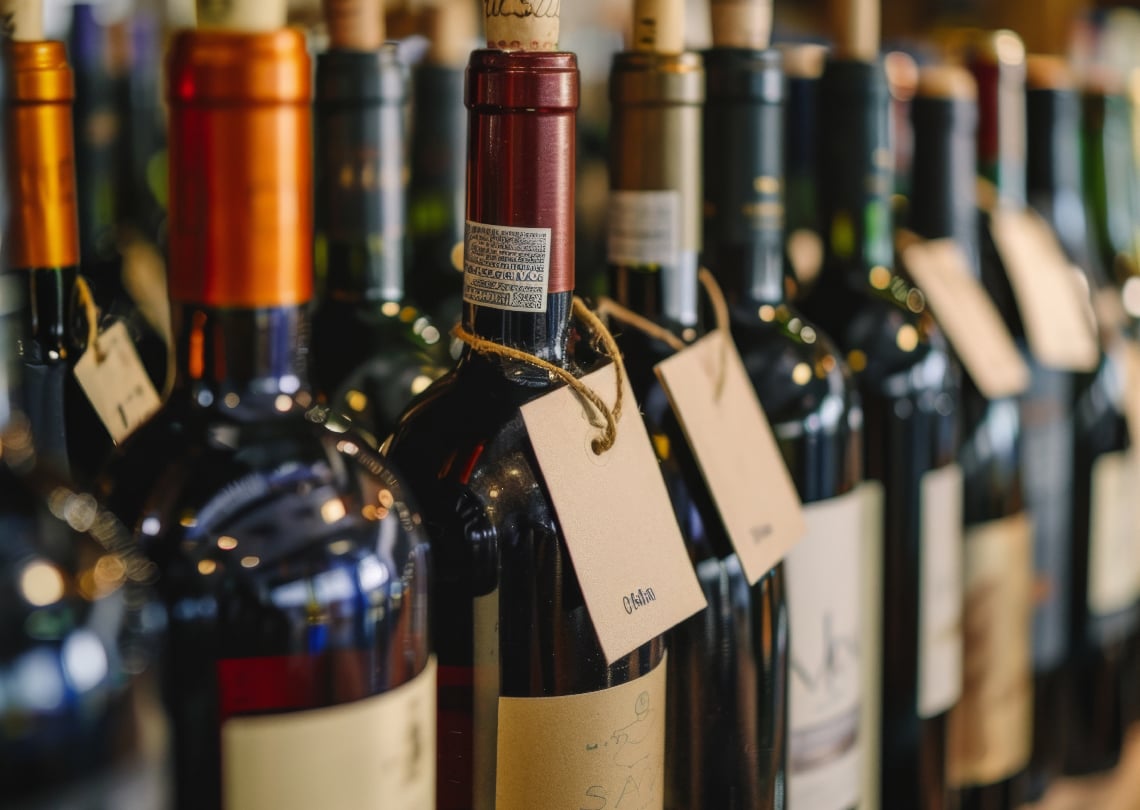In Vino Veritas?

In a recent tweet, distinguished wine writer and critic Jancis Robinson highlighted the traffic in counterfeit wines from Domaine de La Romanée Conti (DRC) and the large sums of money involved. Recognised as the absolute pinnacle of burgundy, a single bottle of wine from DRC can sell for over €13,000 with older vintages yielding significantly more. The high prize and low risk of detection make wine an obvious target for counterfeiters.
Research carried out in 2010 found the value of the fine wine industry to be 3 billion US dollars with estimates that between 0.2 percent and 1 percent of this total was counterfeit. Among factors cited for this growing business were difficulty in proving provenance for older bottles plus the fact wines travel large distances and change hands frequently.
Counterfeit goods are a worldwide problem. In 2016 the OECD reported that 'imports of counterfeit and pirated goods are worth half a billion dollars a year or around 2.5 percent of global imports, with US, Italian and French brands hardest hit and many of the proceeds going to organised crime'. A recent report from Research and Markets entitled 'Global Brand Counterfeiting Report 2018' put a higher estimate of 1.2 trillion dollars on the value of counterfeit goods.
Anyone with a passing interest in history will confirm that forgery has been around for thousands of years and this is particularly true of currency or means of payment.
The first recorded fake coins date back to the 6th century BC and there are early examples of wampum shells being dyed a more rare shade in order to increase their value. Attempts to produce counterfeit notes and coin have even been intended to undermine enemy economies during times of war, but the primary driver has usually been profit and greed.
The subject of a 1950 Hollywood film was an unlikely exception to this rule. 'Mister 880' starred Burt Lancaster as a Secret Service agent who spent 10 years trying to track down a small-scale counterfeiter.
Mister 880 (named after the case file number) was based on the true story of Emerich Juettner a small-time forger who started distributing poorly designed counterfeit dollar bills in New York in 1938 and evaded capture for ten years despite the best efforts of the Secret Service. If his notes were so bad, and some spelled George Washington incorrectly, how did he get away with it for so long? Perhaps the answer lies in the fact that he wasn't too greedy. He only passed one dollar bills (produced on a hand driven printing press) and never returned to the same store twice. Passing a dollar bill hardly drew attention and though the stores became more alert there would be no return visit. The 73 year old could probably have gone on for longer were it not for the chance discovery of some notes and printing plates that had been thrown out of his top floor Broadway apartment following a fire. Some young boys were using the notes to play poker and their father alerted police. Emerich Juettner spent four months in prison and the irony is that he made more money from the film than he ever did from forging dollar bills.
Though an entertaining story, Mister 880 was definitely the exception that proved the rule. More recently in 2012, self-styled Counterfeit God Frank Bourassa was arrested after producing 250 million dollars in fake US currency and served just six weeks in prison. Coins, too, remain a target. In 2014 Italian police found more than half a million fake euro coins.
Enhancements to note quality may have made counterfeiting more difficult and less profitable, but it doesn't stop them trying and there is no reason for complacency. In 2017 around 490,000 counterfeit Bank of England notes with a face value of £10 million were withdrawn from circulation. Across the eurozone almost 700,000 bank notes and over 160,000 coins were withdrawn in the same period.
When it comes to counterfeiting, the difference between wine and cash is that fake wine is only discovered many years later when the bottle is opened. With Glory’s cash deposit and recycling for banks and retailers, counterfeits are detected at the point of presentment. Given central banks offer no compensation for accepted counterfeit currency, this is critical to avoiding losses for businesses and avoiding the risk of returning fake notes and coins to the general public.
At Glory we take pride in the fact that our automation solutions deliver best in class detection of fake notes and coin as well as taking the stress of note counting and authentication away from staff in banking and retail environments. I’ll drink to that.